Compare Exterior Shutter Materials
| Construction | |||
| Strength & Durability | |||
| Weather Resistance | |||
| Weight | |||
| Appearance | |||
| Finishes | |||
| Installation | |||
| Maintenance | |||
| Cost (ranking 1-6) | |||
| Production Time | |||
| Lifespan | |||
| Best Use | |||
| Styles | |||
| Arch Top Option | |||
Large windows can present a real dilemma for homeowners looking to install exterior shutters.
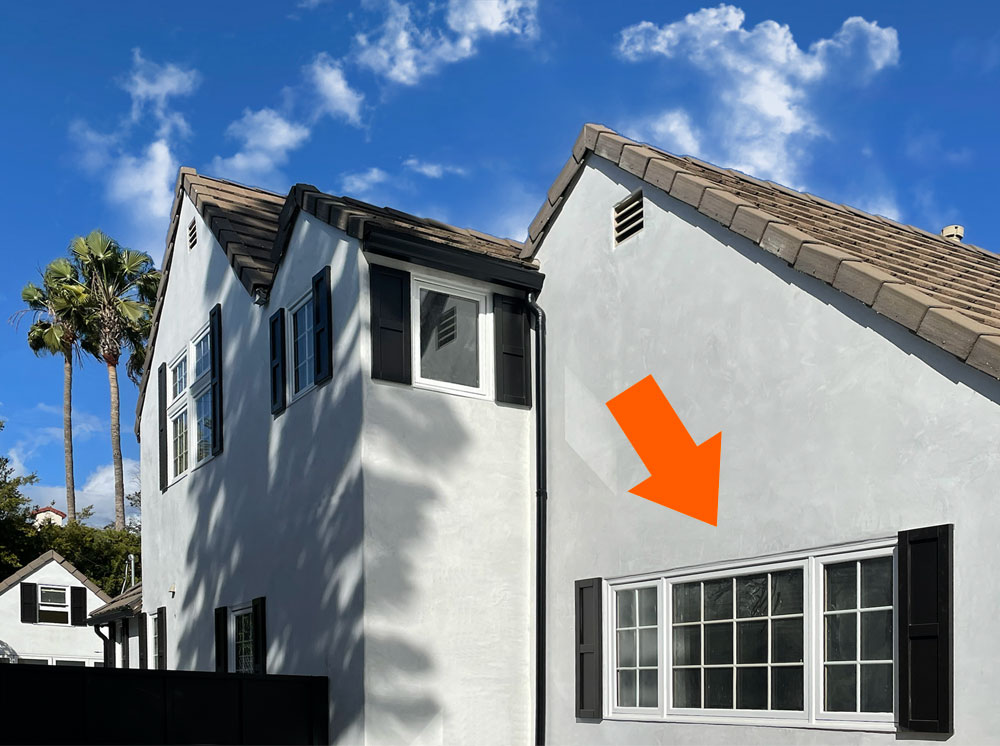
Modern-day exterior shutters are predominantly inoperable, meaning they are installed solely to enhance the appearance of the house. Exterior shutters add color, texture, and depth beyond the scope of other outdoor improvements. Still, ordering the correct size outdoor shutters is essential to the success of the project.
Even though they serve no practical role beyond adding intrigue to the property, exterior shutters should ideally be proportional to the size of the window. This means the combined width of two fixed shutters flanking the window are approximately equal to the window width, giving the illusion that the shutters are able to close over the opening. Functional shutters installed with hinges actually do swing shut and will require greater precision.
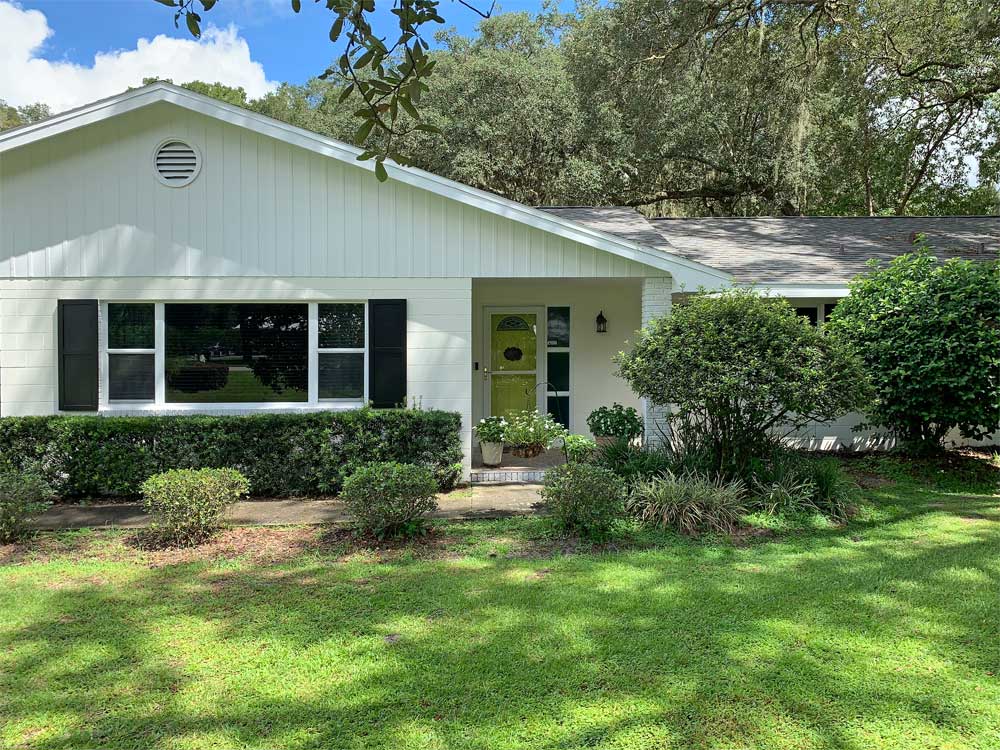
Window sizes have grown over the last few decades. Homeowners and builders are increasingly seeking to incorporate large picture windows for a variety of purposes. Big windows encourage natural light to enter the home and allow the occupant a more expansive view of the outdoors. Open floor plans result in fewer interior walls and wider exterior walls, and improvements in building techniques and materials make expansive windows more practical to incorporate.
Wide windows may benefit interior living, but they can make determining the right size for exterior shutters more difficult. Judicious sacrifices may be necessary to achieve a respectable appearance. All windows are unique, and there is unfortunately not one easy solution for all applications. Some options for your home can be found below.
Wood shutters and composite shutters can be constructed up to 45 inches wide. So two shutters can be accurately installed on a window up to 90 inches (7.5 feet) in width. This is the perfect solution for many historic homes or traditional farmhouses with moderately sized windows.
The challenge of installing such wide outdoor shutters is that they occupy an expansive area. Often there is not enough room on either side of the window to accommodate the extra-wide shutters. If there are obstacles, like the house corner, a roofline, or another window, it may be better to find another solution.
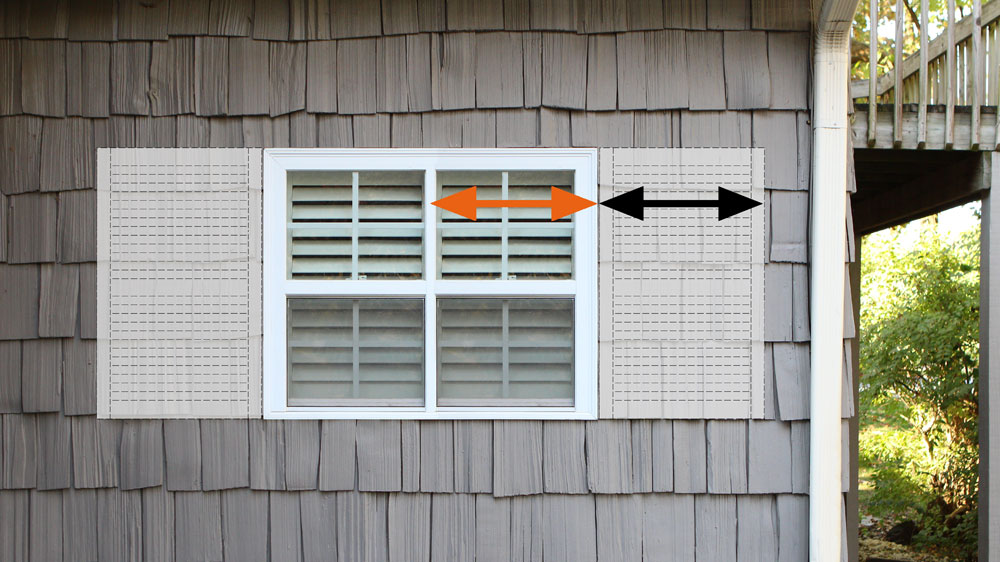
Installing the widest possible shutter is a frequently employed technique, but is not our favorite. It can be an arbitrary procedure that disregards the window size just to fill a void. In some instances, the result can be pleasing, but other more formula-based strategies should first be exhausted.
Many wide openings incorporate side-by-side windows or grids. These divisions can be helpful metrics in determining the best exterior shutter sizes. Measure from the side of the window to the first or second vertical division to figure the shutter width.
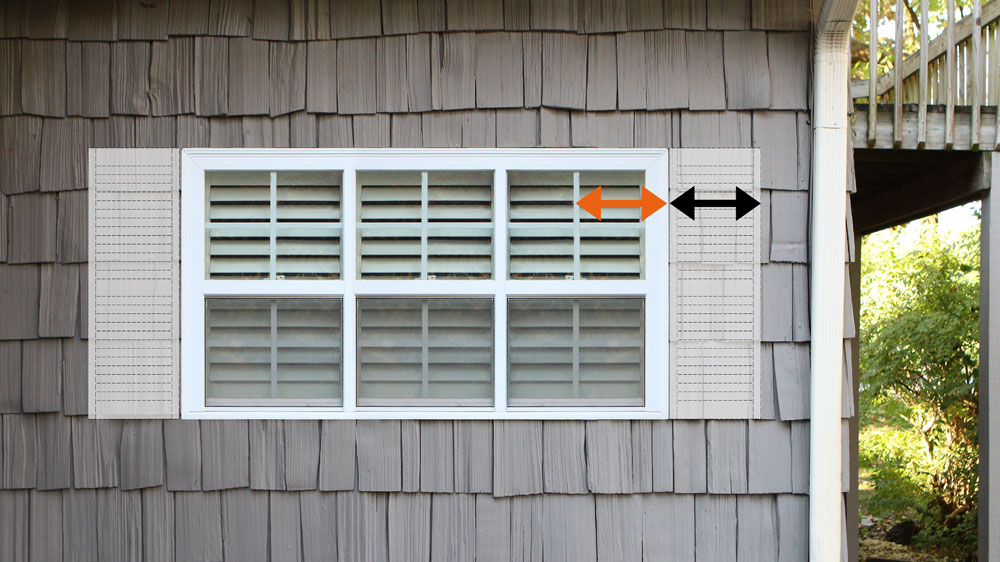
Functional shutters made to cover large windows can be hinged together to achieve a unit to cover the full width. Fixed shutters can mimic this look with only one panel on either side one-quarter the entire width of the window. If the window is divided into three horizontal sections, it may be best for the shutters to follow suit and measure one-third of the window. This strategy is more historically accurate than others.
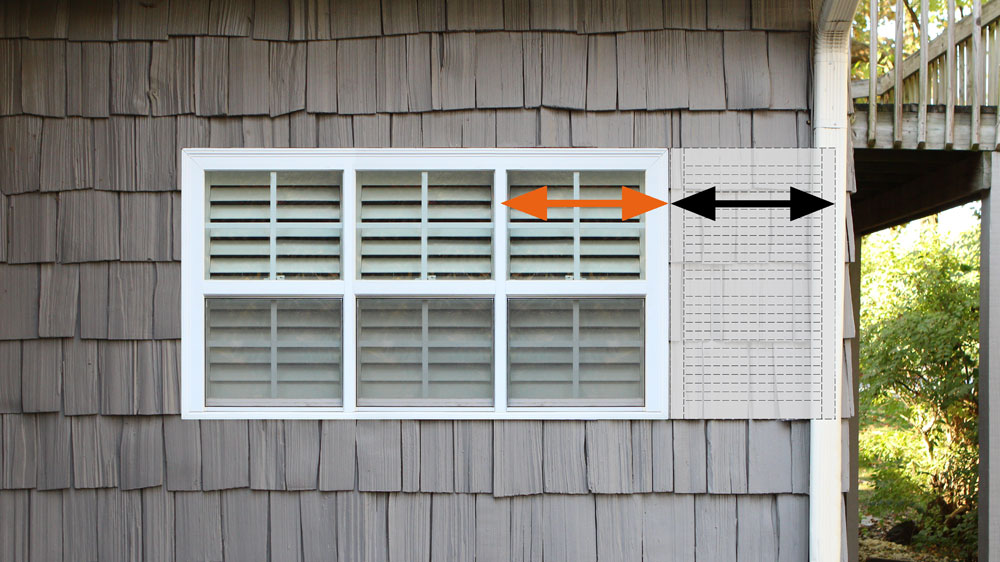
Ordering uniform-sized exterior shutters may seem like a good idea. But windows are different sizes by design and the shutters should reflect those differences. There are better tactics to achieve the desired results.
Traditionally used in tropical locations, Bahama shutters may be a solution for wide windows in any region. This style of shutter hinges at the top of the window and props out at the bottom. This is a great alternative for windows that have minimal space to either side. Bahama shutters can be manufactured up to 85 inches wide.
Measuring for exterior shutters will take time. Use the ShutterLand website to assist in this process. We have video guides to measure for wood and composite shutters and to measure for vinyl shutters.